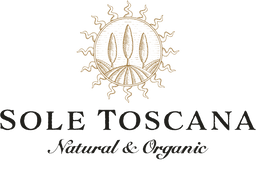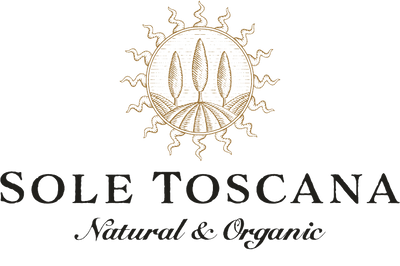If you're big on Clean Beauty, you most probably look through the ingredient lists of products. More often than not, you forfeit purchasing products because of these ingredient lists.
TRUTH IN LABELING
More beauty brands are becoming ingredient-conscious these days. They're embracing true integrity- ingredients and the formulations match precisely with the marketing.
Some, however, engage in greenwashing (misleading labeling). These brands often hide the toxins they use by focusing on what their products don't have.
When you're informed, it is nearly impossible to find more than a handful of clean product lines.
THE DEMAND FOR TRANSPARENCY
Good news, though. The public's increasing demand for transparency has yielded lots of information about what we're purchasing. As a result, a few fantastic skin care brands have been formed. They use pure ingredients, deliver the results they claim, and have high integrity in business practices.
How do you distinguish clean beauty products from toxic ones?
It's difficult to know where to look for clarification about which products are clean and which ones aren't. There are loopholes in the laws which regulate the skincare industry.
A little history
In 1938 the FDA passed the Federal Food, Drug, and Cosmetic Act. Before this, cosmetics weren't included in the (1906) Pure Food & Drug Act since they were not considered a matter of grave public concern.
Between 1906-1938, Congress worked on passing the Federal Food, Drug, and Cosmetic Act after consumers had an adverse reaction to an eyeliner. This gave the FDA more authority to regulate cosmetics, including the need for product recall if an ingredient is found to be unsafe.
Today, the word cosmetics in the regulatory bill includes all makeup, body care, and skincare products. Yet the FDA doesn't regulate skincare.
Quotes from FDA website
The quotes below confirm that the FDA doesn't require cosmetics to be tested and approved before and after they get produced. That responsibility is left to the companies.
THE FDA ON PRODUCT SAFETY
"Companies and individuals who manufacture or market cosmetics have a legal responsibility to ensure the safety of their products. Neither the law nor FDA regulations require specific tests to demonstrate the safety of individual products or ingredients. The law also does not require cosmetic companies to share their safety information with FDA."
"FDA's legal authority over cosmetics is different from our authority over other products we regulate, such as drugs, biologics, and medical devices. Under the law, cosmetic products and ingredients do not need FDA premarket approval, with the exception of color additives."
THE RISE OF "GREEN" SKINCARE AND CLEAN BEAUTY
Companies use the terms Organic, Non-Toxic, Natural, Green, and Clean Beauty to attract customers to the healthy products that they're looking for. After all, no one has hours to study ingredients to know if products are healthy or toxic. However, these terms have different meanings.
Product descriptions explained
The above words have varying definitions and adhere to different standards.
Organic
The definition of organic has changed over time. It's been used as THE indicator of healthy ingredients in a product. These days, organic can also mean that the ingredients are produced without dangerous pesticides.
The term organic indicates that a line has quality standards.
USDA-Certified Organic means the products contain at least 95% organically cultivated ingredients. NSF Organic-Certified means the products contain at least 70% organic ingredients.
Remember that ultimately, the proof is on the ingredients label.
Natural skincare
The term natural indicates that the ingredients used are sourced from nature and are minimally modified. This used to be a great term to look for on products as an indicator of your healthy options.
Many companies use this term, yet only a few of the ingredients are natural. Unless you read the ingredient list, seeing natural on the bottle isn't a guarantee that the product is clean.
Green skincare
Products with this term on the label mean that they were made with a limited impact on the environment. This covers ingredients in the bottle, manufacturing, and packaging processes. Many crafty companies classify their products as green because their products come in recyclable packaging and labels. This is misleading.

Clean beauty
Clean beauty is the latest craze in the skincare industry. Many brands use the above terms for their products. Most times, there's not much to back up their claims.
Clean beauty means that products don't contain dirty ingredients, which are considered unsafe. Non-toxic is a better term for clean beauty. It focuses on the effect the product will have on users more than the ingredients. This is because some natural ingredients and plants can be toxic.
What do you need to know about clean beauty?
The lists of toxic ingredients for the clean beauty movement vary widely. For instance, Sephora pledges that products with their CLEAN seal don't contain their list of 13+ dirty ingredients. Many other companies use the dirty dozen and foul 30 to guide their quality standard. Also, the EU's cosmetic database bans 1,382 chemicals.
EUROPEAN STANDARDS
For many years now, Europe has adopted superior policies on ingredients. However, it's not easy to find pure, clean beauty products there either!
What's the future of clean beauty?
We foresee that the skincare industry will develop a universal clean beauty score. The top score is reserved for brands that meet all the green, organic, and pure standards.
Most importantly, clean beauty isn't only what a product doesn't contain. Rather, it's about company integrity, most of all. Invest in companies that go through the costly process of recalling products from shelves and reformulate them to ensure they adhere to the clean beauty standard.
Top 10 advantages of clean beauty
Here are ten incredible benefits of clean beauty and why you should go this route.
- Prioritizes the safety of ingredients used
- No exposure to allergens and irritants which cause eczema, rosacea, and contact dermatitis
- You're less susceptible to sensitivity, irritation, and redness.
- No exposure to potential carcinogens
- Reduced risk of cancer
- No exposure to potential endocrine disruptors which cause hormonal imbalances and infertility
- Reduces your risk of hormonal dysfunction
- Decreases the level of body toxicity since you encounter less daily chemical exposure
- Healthy skin directly enhances our immune system
- Improves your health and wellbeing overall. Taking good care of your skin boosts mental and physical wellbeing
To us at Sole Toscana, clean beauty goes beyond skincare. It's a lifestyle. Thankfully, the beauty industry is evolving, with more organic and pure products.
With love,
The Sole Toscana Beauty Team


